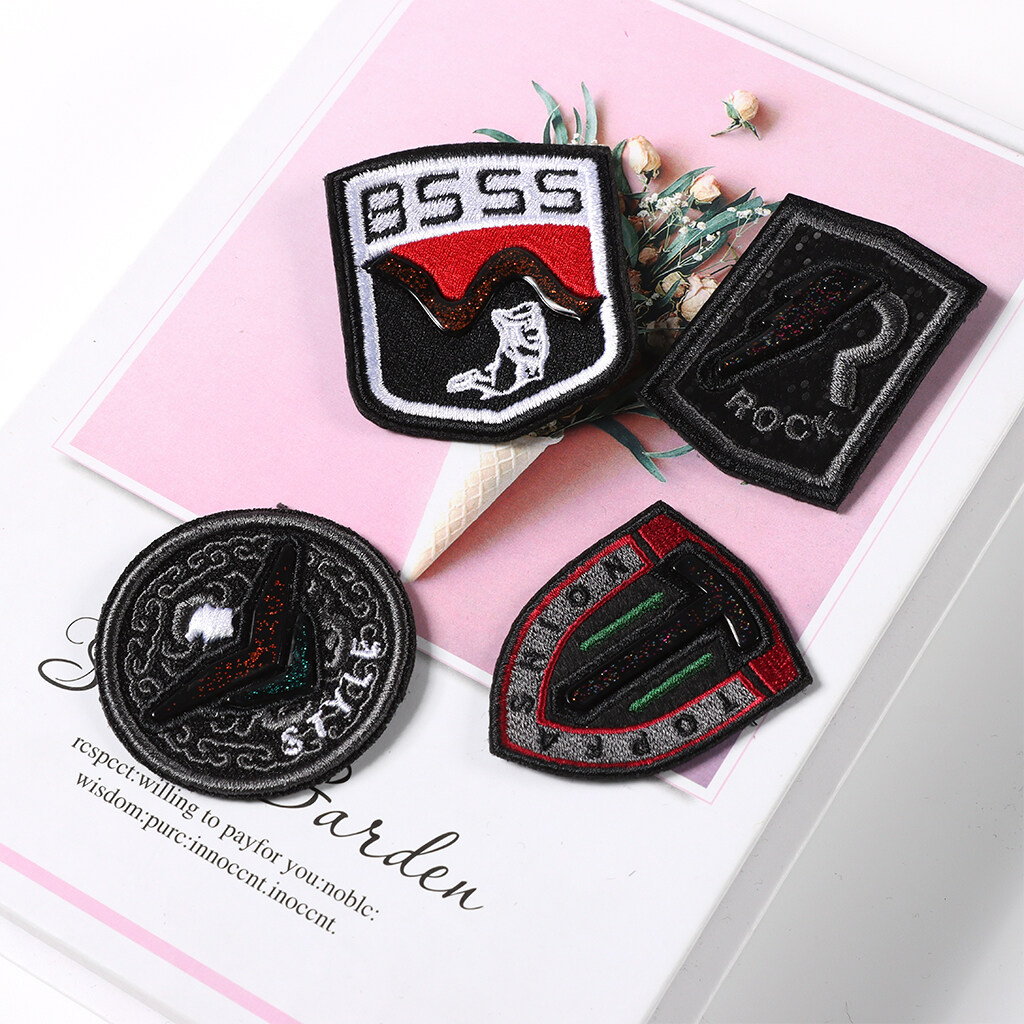Email cannot be empty
Password cannot be empty
Email format error
Email cannot be empty
Email already exists
6-20 characters(letters plus numbers only)
The password is inconsistent
Email format error
Email cannot be empty
Email does not exist
6-20 characters(letters plus numbers only)
The password is inconsistent


In today's world of fast fashion and mass production, handmade embroidery patches stand out as a symbol of craftsmanship and individuality. These intricate pieces of art not only add a personal touch to clothing and accessories but also tell a story through every stitch. Whether you're a fashion enthusiast, a DIY lover, or someone looking to add a unique flair to your wardrobe, handmade embroidery patches offer a versatile and creative solution. In this post, we'll delve into the world of handmade embroidery patches, exploring their history, how they are made, and why they continue to be a popular choice for personal and commercial use.
The History of Embroidery Patches
Embroidery has been a part of human culture for thousands of years. The earliest known examples of embroidery date back to ancient China, where the art form was used to decorate clothing and other textiles. Over the centuries, embroidery techniques spread across the world, each culture adding its own unique styles and motifs.
Embroidery patches, specifically, have a rich history as well. They were originally used as a practical solution for mending clothes, but over time, they evolved into decorative elements. In the military, for instance, embroidery patches are used to signify rank and achievements. In modern times, they have become popular in various subcultures, from punk rock to biker gangs, each using patches to convey identity and affiliation.
The Art of Making Handmade Embroidery Patches
Creating a handmade embroidery patch is a meticulous process that requires skill and patience. Here's a step-by-step look at how these beautiful patches are made:
1. Design Creation
The first step in making a handmade embroidery patch is creating the design. This can be done digitally or drawn by hand. The design is then transferred onto fabric, usually with a light pencil or fabric marker.
2. Selecting Materials
Choosing the right materials is crucial for the final look and durability of the patch. The fabric for the base should be sturdy enough to withstand embroidery. Common choices include cotton, felt, and twill. The threads used for embroidery are typically made of cotton, silk, or polyester.
3. Embroidery Techniques
There are various embroidery techniques that can be used to create a patch. Some of the most popular ones include:
- Satin Stitch: This technique involves creating a smooth, satin-like finish by stitching close, parallel lines.
- Chain Stitch: This creates a chain-like pattern and is often used for outlining designs.
- Backstitch: This is a basic stitch that is strong and durable, making it ideal for outlining and detail work.
- French Knots: These are small, raised knots that add texture to the design.
4. Adding Details
Once the main design is embroidered, additional details such as borders, text, or extra embellishments can be added. This is where the artist's creativity truly shines, as these details can make each patch unique.
5. Finishing Touches
The final step is to cut out the patch from the fabric, leaving a small border around the design. The edges can be finished with a serger or a zigzag stitch to prevent fraying. An iron-on backing can also be added for easy application to clothing and accessories.
Why Choose Handmade Embroidery Patches?
Handmade embroidery patches offer several advantages over mass-produced ones. Here are some reasons why you might choose handmade patches:
1. Quality and Durability
The embroidery patches are crafted with attention to detail and quality materials, ensuring they last longer and withstand wear and tear better than machine-made patches.
2. Unique and Customizable
Each handmade patch is a unique piece of art. You can customize the design, colors, and size to suit your personal style or brand identity. This level of customization is often not available with mass-produced patches.
3. Supporting Artisans
By choosing the embroidery patches, you are supporting skilled artisans and their craft. This helps keep traditional techniques alive and provides economic opportunities for those who create these beautiful pieces.
The Role of Embroidery Patch Exporters
With the growing popularity, there is an increasing demand for high-quality patches from around the world. Embroidery patch exporters play a crucial role in meeting this demand, connecting artisans with global markets. These exporters source patches from various regions, including embroidery patch in China, known for their intricate designs and high craftsmanship standards.
How to Use Handmade Embroidery Patches
Handmade embroidery patches are incredibly versatile and can be used in numerous ways to enhance your wardrobe and accessories. Here are some creative ideas:
1. Personalize Clothing
One of the most popular uses for embroidery patches is to personalize clothing. Whether it's a denim jacket, a pair of jeans, or a plain t-shirt, adding a handmade patch can instantly elevate your outfit and make it uniquely yours.
2. Accessorize Bags and Hats
Add a touch of personality to your bags, hats, and other accessories with the embroidery patches. They can be sewn or ironed onto fabric surfaces, allowing you to showcase your style wherever you go.
3. Create Custom Gifts
The embroidery patches make thoughtful and personalized gifts. You can create custom patches with names, initials, or special designs that reflect the recipient's interests and preferences.
4. Decorate Home Items
Beyond clothing and accessories, handmade embroidery patches can also be used to decorate home items such as pillows, blankets, and wall art. They add a charming, handmade touch to your living space.
Caring for Your Handmade Embroidery Patches
To ensure your embroidery patches remain in pristine condition, it's essential to care for them properly. Here are some tips:
1. Washing
Hand wash items with embroidery patches using mild detergent and cold water. Avoid using bleach or harsh chemicals, as they can damage the threads and fabric.
2. Drying
Air dry items with embroidery patches to prevent shrinkage and preserve the integrity of the stitches. Avoid using a tumble dryer, as the heat can cause the fabric to warp.
3. Ironing
If you need to iron items with embroidery patches, do so with caution. Place a cloth over the patch to protect it from direct heat and use a low-temperature setting.
Conclusion
Handmade embroidery patches are a timeless and versatile way to add a personal touch to your wardrobe and accessories. With their rich history, intricate craftsmanship, and unique designs, they offer a perfect blend of tradition and creativity. Whether you're looking to personalize your clothing, create custom gifts, or support skilled artisans, the embroidery patches are an excellent choice.